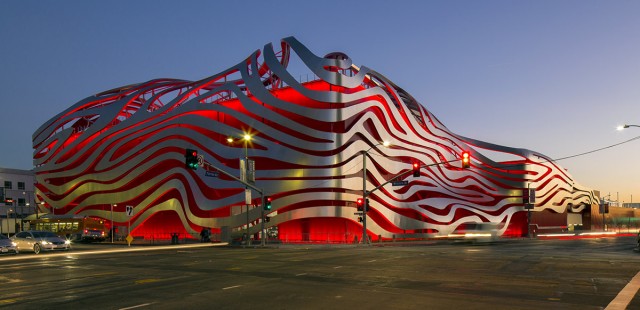
Los Angeles has three major institutions on what the tour guides call Museum Row: one for art, one for natural history, and one entirely devoted to cars. The Petersen Automotive Museum is the Temple of the Car in what is considered the car culture capital of the US, possibly even the world. It reopened last week after a $125 million remodel, but for JNCers the news is that there’s a new push to have (slightly) more Nihon steel represented.
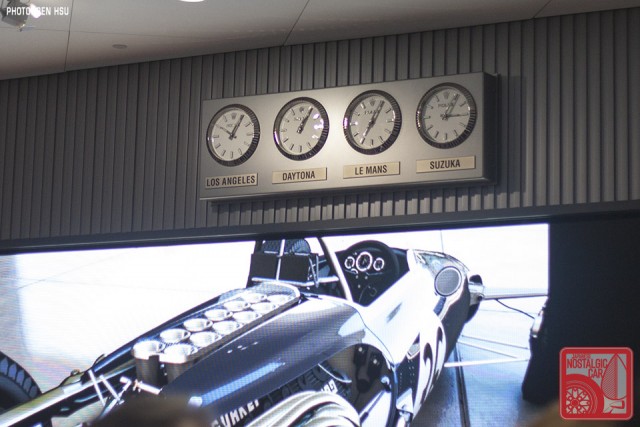
This is significant because clearly Japanese machinery has had a massive influence on global car culture. None of you would be reading this if that wasn’t the case. However, it’s one aspect that had always been lacking at the Petersen, which, for better or worse, often serves as the authority for what constitutes a proper custom car to the thousands upon thousands of tourists who roam through its halls.

Their most popular car by far is the Batmobile, which gives you an idea of what museum-goers typically expect to see. By way of Hollywood, however, it educates the non- petrolhead masses. Thanks to is roots — founded by the originator of Hot Rod magazine, Robert E. Petersen — the Petersen has always leaned towards hot rods, American muscle, and multi-million dollar European classics from the Pebble Beach set.

That’s why it’s so remarkable that there is now a corner of the museum devoted to tuners. Though just a two-car display, it’s a permanent part of the Petersen. “Tuners are today what Hot Rods were to automobile performance enthusiasts 60 years ago. You can’t have a gallery of Hot Rods, without including Tuners,” said Leslie Kendall, chief curator.
Perhaps more importantly, the JNC booth has been immortalized in the background of the wall mural. The fact that there’s a 10-foot photo of Del Sols, CRXes and Civics, as well as an actual Scion FR-S, on the same floors that exhibit $40 million Bugatti Type 57SC Atlantics is a noteworthy development.
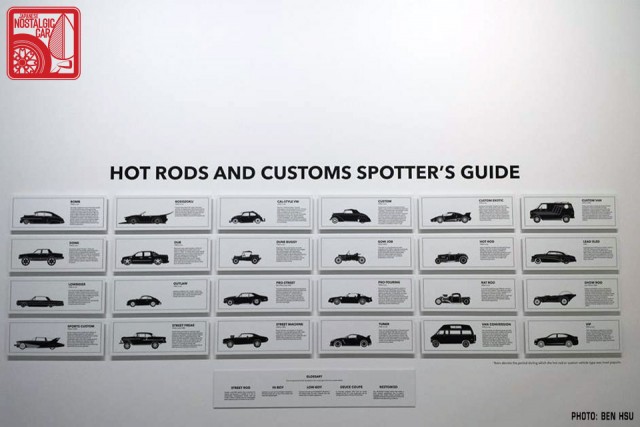
There’s even an alphabetical custom car spotter’s guide that includes Japanese influences such as tuner, VIP, and bosozoku. Of course there are many more, but this is a great start. We never thought we’d live to see the day when the word bosozoku was uttered in the Petersen Museum.
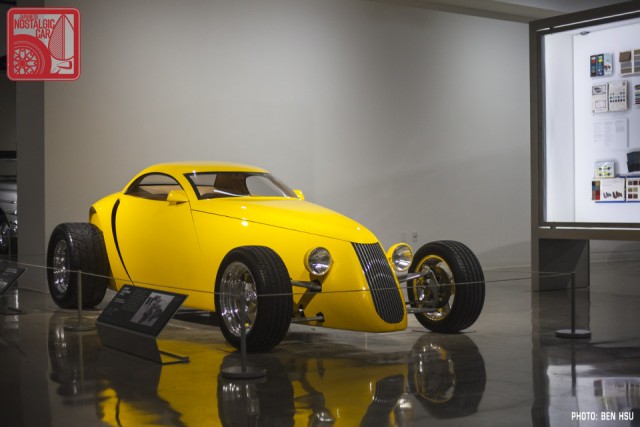
Even beyond the the tuner corner, the Japanese influence is there; you just have to look for it. The Petersen already has Boyd Coddington’s Sportstar, powered by a Lexus V8. Coddington’s 1992 Aluma Coupe was, according to the museum, “one of the first… to combine the style and feel of a 1950s hot rod with the engineering, comfort and refinement of a modern car.” Its secret? The all-aluminum body hides a 4G63 turbo Mitsubishi motor taken from the first-gen Eclipse and mounted mid-engine.
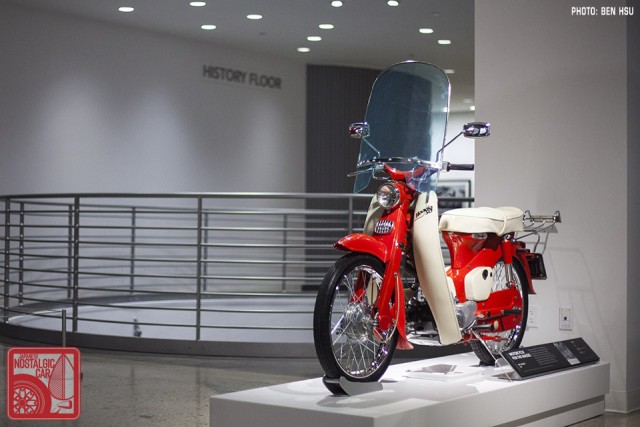
On the History Floor, a 1961 50cc Honda SuperCub represented the best selling motor vehicle ever produced. As of 2014, Honda has sold 87 million, it has been in continuous production since 1958, and as we saw at the Tokyo Motor Show, Honda is still making them.

Exhibits are divided into themes and rotate constantly, so you’re unlikely to see the same cars twice. In “Precious Metal,” every single car was silver, from a McLaren F1 to the Pebble Beach-winning Ferrari 375MM Scaglietti Coupe. A personal favorite of mine is the 1959 Corvette Sting Ray Racer, designed by Pete Brock (of Datsun BRE fame) and Larry Shinoda. You could be forgiven if you thought it was a black and white photo, but it’s not.
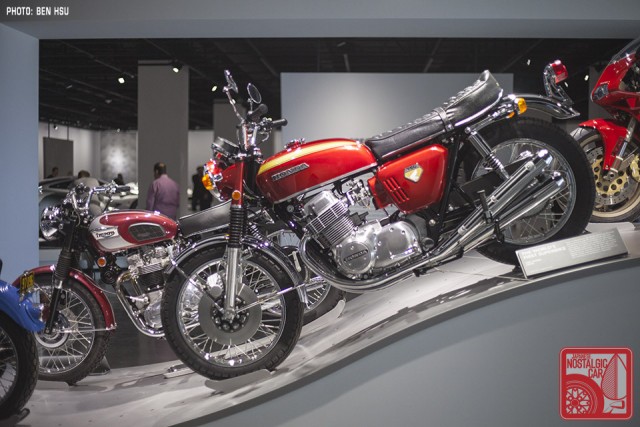
The motorcycle display held a beautiful 1969 Honda CB750 that looked as new as it did the day it rolled out of the showroom. Its inline-four, each cylinder with its own carb, was a work of art. Other performance features like a disc brake and 5-speed transmission — typically found only on MotoGP racers at the time — earned the CB750 the world’s first use of the “superbike” label.
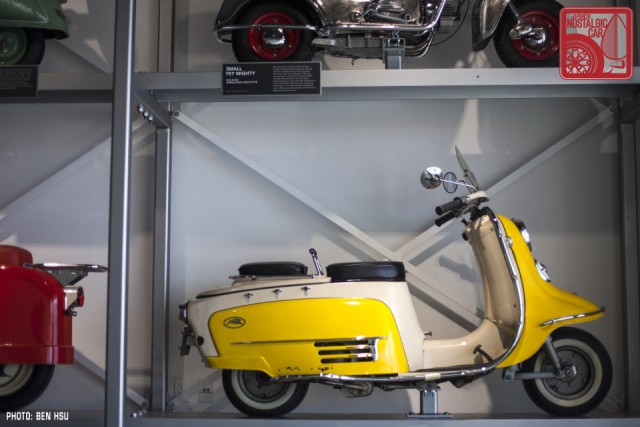
You could call the Fuji Rabbit the first Subaru vehicle. Built by Fuji Heavy Industries, its sculpted body was formed by the talents of ex-aircraft engineers who applied their aerodynamics knowledge to a scooter. It was quite advanced for its time, as this 1962 model had an automatic transmission, electric starter and pneumatic suspension. It also predated the Vespa by six months.
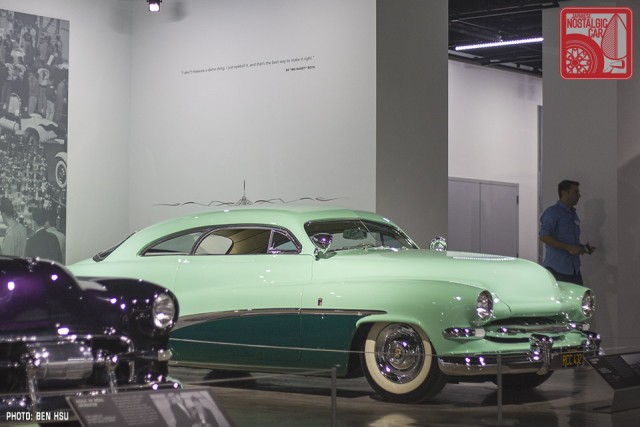
The Hirohata Merc is a legend amongst lead sleds. Commissioned by Japanese American Bob Hirohata and built by the famed Barris brothers, it is considered the first shoebox Mercury to sport a chopped roof. The radical look influenced a generation of builders and led to Rod & Custom magazine calling the Hirohata Merc “the most famous custom of the classic era.”
 However, the Petersen Museum isn’t just a place where you look at painted metal. Lining its many walls are pieces of automotive art, such as Expo 70 Japan — Tradition vs Technology by Marv Rubin, which depicts a Toyota Corona Mark II with images of ancient Japan.
However, the Petersen Museum isn’t just a place where you look at painted metal. Lining its many walls are pieces of automotive art, such as Expo 70 Japan — Tradition vs Technology by Marv Rubin, which depicts a Toyota Corona Mark II with images of ancient Japan.
There are also interactive exhibits developed in collaboration with the Forza video game franchise and Pixar Studios, creator the of Cars movies that teach kids about how automobiles work.
The museum has also been a gathering place for car enthusiasts, a podcast publisher, and, with the new remodel, it will also serve as a resource. Several magazine titles are donating all their past works to be archived digitally. Then there’s the vault, which is constantly restoring significant cars for the museum’s collection.
So while it’s not like going to the Toyota Automobile Museum in Japan, progress is being made. Perhaps it’s only fitting, as the building the Petersen is in was originally a Seibu department store built in 1962. While the new exterior makes it unrecognizable as such, we expect what’s inside to continue to evolve. Maybe one day we’ll even see an bosozoku Skyline car next to a Delahaye.
Images: Petersen exterior by David Zaitz.






It’s about time, I can’t wait to see it again now that it’s more my style. I know that most older car folks are lamenting, or worse (ranting!), about the new direction for the Peterson, but not me. Now, for a public museum to feature only Japanese vehicles, that would be a dream.
At present JCCS is as close as you can come to your dream unfortunately.
The TV commercial introducing the Saturn was filmed at the Petersen. Just before zeroing in on the Saturn the camera swept past a Datsun 411 on a pedistal. Wonder if it’s still in the basement!
The last time I was in the vault I didn’t see a 411 and none of the staff mentioned it to me, so I’m assuming it’s gone or was a borrowed car from a private collector. They do have a Nissan Cedric and Toyota Crown though.
2 years after that commercial, I was shopping at my local computer store when a young kid and his dad spotted my RL411 and told me that they had seen one “recently” at the Petersen, so it may have been a short time loan or a “clearance sale” to make room for other acquisitions. Petersen does occasionally sell off “off brands” for funds.
Place looks amazing. I love that the Petersen appreciates all automobiles.
A great museum, now even better !!
The museum looks spectacular on the inside, but the outside looks like the Mazda Furai after Top Gear got done with it. The old ’60s architecture had a certain reserved dignity to it, just as many ’60s Japanese cars did. But it wasn’t flashy enough, I suppose.